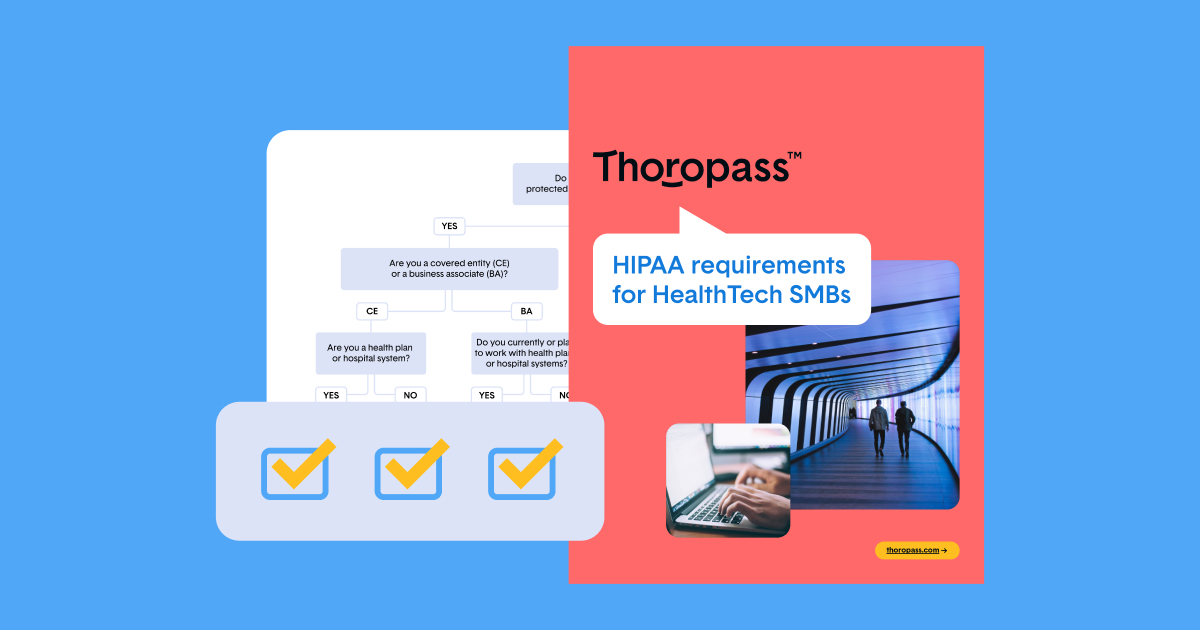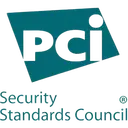Oro provides content designed to educate and help audiences on their compliance journey.
PHI is a key aspect of healthcare, and knowing how it’s regulated, used, and protected is key to ensuring your healthcare business remains compliant.
Imagine being in a world where yours or your customer’s personal health information could easily fall into the wrong hands, leading to identity theft, medical fraud, and an invasion of privacy. Sounds frightening, right? That’s precisely why understanding the concept of protected health information (PHI) is crucial.
In this blog post, we’ll explore the various dimensions of PHI, including its definition, key components, forms, and the roles of covered entities and business associates. We’ll also discuss the importance of the HIPAA Privacy and Security Rules, de-identification and anonymization processes, what is PHI in healthcare apps and wearable technology, the consequences of PHI breaches and leaks, and best practices for protecting PHI.
Short summary
- Protected Health Information (PHI) is data that must be securely used, shared & protected according to HIPAA regulations
- Covered entities and business associates are responsible for following complying with HIPAA regulations
- Best practices like investing in cybersecurity, implementing robust policies & conducting regular risk assessments help protect PHI, stay compliant and keep patient trust
Defining PHI: Protected health information explained
PHI is protected health information that is governed by the Health Insurance Portability and Accountability Act (HIPAA). It encompasses a wide range of information, including demographic, medical, and insurance information. Essentially, PHI is individually identifiable health information transmitted (or maintained) in any form (or medium).
Individually identifiable health information is a subset of health information created (or received) by a healthcare provider, health plan, employer, or healthcare clearinghouse that relates to the past, present, or future physical (or mental) health, condition, provision of healthcare, or payment of healthcare that directly or indirectly identifies an individual.
The primary purpose of regulating PHI is to ensure the confidentiality, integrity, and availability of healthcare data. HIPAA-covered entities include:
- Healthcare providers
- Health insurance companies, and
- Healthcare clearinghouses
Covered entities, along with their business associates, maintain trust in the healthcare industry.
Key components of PHI: The direct identifiers
Under HIPAA, identifiers determine if the health information is considered PHI. These identifiers include:
- Names
- Addresses
- Dates related to the health or identity of individuals
- Telephone numbers
- Fax numbers
- Email addresses
- Social security numbers
- Medical record numbers
- Health insurance beneficiary numbers
- Certificate/license numbers
- Vehicle identifiers
- Health plan beneficiary numbers
- Device attributes or serial numbers
- Digital identifiers, such as website URLs
- IP addresses
- Biometric elements, including finger, retinal, and voiceprints
- Photographs of a patient’s face
- Other identifying numbers or codes
- Genetic information
These identifiers directly identify an individual and when created or received by a covered entity, are considered protected health information (PHI). The list of identifiers was created to ensure that health data can be identified and traced back to an individual, making it crucial for health insurance companies and healthcare providers to handle them with care.

CONTINUED READING
SOC 2, HIPAA, and HITRUST: What do they mean for organizations in the healthcare space?
PHI and its various forms
PHI can come in several forms, such as electronic health records, medical history, test results, and insurance information. Electronic Protected Health Information (ePHI) is a type of PHI. It is created, stored, transmitted, or received in an electronic format. PHI can be present in various documents, forms, and communication channels, like medical bills, insurance forms, and doctor’s notes, which are often handled by healthcare professionals.
Differentiating between paper and electronic PHI records under HIPAA is vital, as there are specific considerations to take into account, like response time for patient requests for access to their data and disposal methods. The identifiers play a critical role in determining if the information is considered PHI according to HIPAA, ensuring that the data is used, shared, and protected properly.
Understanding covered entities and business associates
To ensure the proper handling of PHI, HIPAA outlines the roles and responsibilities of covered entities and business associates. Covered entities are healthcare providers, health plans, or healthcare clearinghouses that handle treatment, payment, or operations in healthcare and transmit PHI electronically.
Business associates, on the other hand, are third-party vendors who provide services to a HIPAA-covered entity that creates, receives, maintains, or transmits protected health information on a covered entity’s behalf.
Covered entities
A HIPAA-covered entity is any healthcare provider or insurer that meets the requirements to be considered a HIPAA-covered entity. Examples of covered entities include:
- Doctors
- Clinics
- Psychologists
- Dentists
- Chiropractors
- Nursing homes
- Pharmacies
Covered entities must adhere to the HIPAA Privacy,Security, and Breach Notification Rule, which include safeguarding PHI and ensuring compliance with federal regulations.
Business associates
A business associate is someone outside of the covered entity’s workforce who maintains the ‘persistence of custody’ over protected health information (PHI) on behalf of the covered entity. Examples of business associates include:
- Third-party vendors who provide services to a HIPAA-covered entity, such as billing companies
- Data storage providers
- Software developers that maintain access to PHI
Like covered entities, business associates are also subject to enforcement actions by the HHS’ Office for Civil Rights (OCR) and must comply with HIPAA regulations. Ensuring compliance with these regulations helps protect PHI and maintain trust in the healthcare industry.
HIPAA privacy and security rules: Safeguarding PHI
The HIPAA Privacy and Security Rules are essential components of PHI protection. The Privacy Rule outlines how healthcare organizations can use and disclose PHI, while the Security Rules focus on security measures to protect PHI from unauthorized access. Both covered entities and business associates are subject to these rules, as they play a crucial role in ensuring the proper use, sharing, and protection of PHI.
Organizations must comply with the HIPAA Privacy and Security Rules to ensure that PHI is used appropriately.
Privacy rule
The HIPAA Privacy Rule is a federal law that sets standards to protect the privacy of personal health information. It applies to all forms of protected health information, whether it’s electronic, written, or spoken. The Privacy Rule allows healthcare organizations to use and disclose PHI for purposes allowed by the Privacy Rule, without needing authorization from the patient.
The Privacy Rule also grants patients certain rights regarding their PHI, such as the right to access, amend, and get a copy of it. Ensuring compliance with the Privacy Rule is essential for safeguarding patients’ privacy rights and maintaining trust in the healthcare industry.
Security rule
The HIPAA Security Rule is a set of regulations that require covered entities and business associates to maintain administrative, technical, and physical safeguards for protecting electronic protected health information (ePHI). These safeguards are essential for ensuring the confidentiality, integrity, and availability of PHI.
The Security Rule outlines guidelines for evaluating ePHI, ensuring that covered entities and business associates take the necessary measures to protect their patient’s PHI. By adhering to the Security Rule, healthcare organizations can prevent unauthorized access to PHI and safeguard patients’ privacy rights.
De-identification and anonymization of PHI
De-identification and anonymization are processes that remove or mask identifiers from PHI data, making it impossible to trace the information back to an individual. These processes allow healthcare data to be used for research and development purposes without compromising patient privacy.
De-identification involves the removal of all identifying details (such as the direct identifiers) or leveraging an expert to make a determination that there is a low probability of identifying an individual within a given data set.
Anonymization is the process of erasing or encrypting identifiers to restrict the ability to link an individual back to an original data set (or stored data). Anonymized PHI is commonly used in clinical and research settings to study health and healthcare trends, as well as to create value-based care programs.
The cost of getting it wrong: PHI breaches and leaks
The consequences of PHI breaches and leaks can be severe, including fines, legal penalties, and reputational damage. Financial penalties for breaching PHI can range from $100 to $50,000 for a single accidental violation, with a maximum penalty of $1.5 million yearly for violations of the same provision. In cases of willful neglect or malicious intent, fines can be even higher, and individuals may face prison time of up to 10 years. Reputational damage from PHI breaches and leaks can also have a significant impact on healthcare organizations, leading to loss of trust and potential clients.
Best practices for protecting PHI
Protecting PHI is essential for maintaining patient privacy and trust in the healthcare industry. Investing in cybersecurity, implementing robust privacy policies, and conducting regular risk assessments are some of the best practices for safeguarding PHI.
A comprehensive security program that includes administrative, physical, and technical safeguards is crucial for ensuring the protection of PHI. Moreover, having a strong third-party risk management framework and vendor management policy is essential for covered entities and business associates to ensure the security of PHI throughout the healthcare ecosystem.
Key takeaway: Staying vigilant and informed is key
Understanding the concept of protected health information (PHI) and the various aspects related to it is crucial for safeguarding patient privacy and maintaining trust in the healthcare industry.
By staying informed and implementing the best practices discussed in this post, healthcare organizations, professionals, and patients can work together to ensure that PHI is used, shared, and protected responsibly. In the ever-evolving world of healthcare, staying vigilant and proactive in safeguarding PHI is essential for maintaining trust and ensuring the future of healthcare innovation.
FAQs about PHI
What is PHI in HIPAA?
PHI stands for Protected Health Information and is used to describe all the information collected, stored, or used by healthcare organizations for the diagnosis or treatment of an individual that can be used to personally identify them.
This information is subject to specific security and privacy requirements set out by the HIPAA Privacy Rule.
What is an example of PHI?
Protected health information (PHI) includes addresses, dates (such as birth, discharge, and admission dates), and biometric identifiers like finger and voice prints. The full list of identifiers includes:
- Names
- Addresses
- Dates related to the health or identity of individuals
- Telephone numbers
- Fax numbers
- Email addresses
- Social security numbers
- Medical record numbers
- Health insurance beneficiary numbers
- Certificate/license numbers
- Vehicle identifiers
- Health plan beneficiary numbers
- Device attributes or serial numbers
- Digital identifiers, such as website URLs
- IP addresses
- Biometric elements, including finger, retinal, and voiceprints
- Photographs of a patient’s face
- Other identifying numbers or codes
- Genetic information
What is the role of covered entities and business associates in handling PHI?
Covered entities and business associates play a crucial role in protecting PHI, adhering to HIPAA Privacy and Security Rules, and maintaining trust in the healthcare industry.
How can healthcare organizations protect PHI?
Healthcare organizations can invest in cybersecurity, implement privacy policies, conduct regular risk assessments, and maintain a strong third-party risk management framework to protect PHI.
Recommended for You
Find the right compliance mix for your HealthTech business
Compliance isn’t just required—it’s good business. Leverage this guide to see how you can leverage SOC 2, HITRUST, and HIPAA compliance to help your business stand out in a crowded marketplace.

Related Posts
Stay connected
Subscribe to receive new blog articles and updates from Thoropass in your inbox.
Want to join our team?
Help Thoropass ensure that compliance never gets in the way of innovation.














.png)